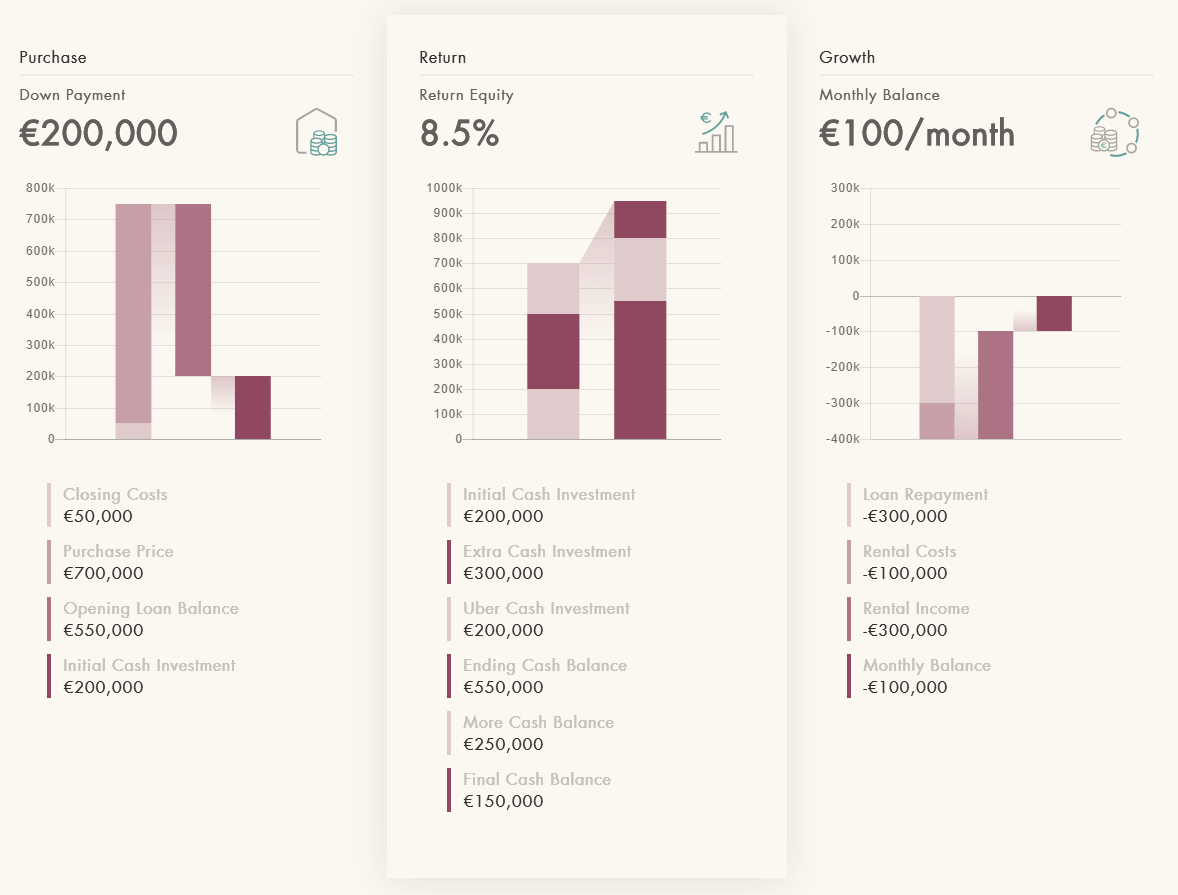Awesome
Installation
npm install --save chartjs-plugin-waterfall
Here's what it looks like:

Usage
Just import the plugin and add it to any chart that you want to be a waterfall chart like so:
import waterFallPlugin from 'chartjs-plugin-waterfall';
var chart = new Chart(ctx, {
plugins: [waterFallPlugin]
});
Example gist by @EdwinChua: https://gist.github.com/EdwinChua/0a5d66dc561fe7d3866021b18a320585
See the plugins documentation for more info.
How it works
This plugin works by checking if any of your datasets contain a property called dummyStack that is set to true.
The stack property must be used in conjunction with dummyStack for this plugin to work properly.
If dummyStack is true then it hides the label, tooltip and sets the color invisible. When you use stacking with this it creates the affect
of a floating bar as shown in the image above that we can use for waterfall charts as chartjs-2 doesn't support waterfall charts
by default.
E.g:
const data = {
datasets: [
{
label: 'Closing Costs',
data: [50],
backgroundColor: '#e8cdd7',
stack: 'stack 1',
},
{
label: 'Purchase Price',
data: [700],
backgroundColor: '#d29baf',
stack: 'stack 1',
},
{
data: [200],
waterfall: {
dummyStack: true,
},
stack: 'stack 2',
},
{
label: 'Opening Loan Balance',
data: [550],
backgroundColor: '#bb6987',
stack: 'stack 2',
},
{
label: 'Initial Cash Investment',
data: [200],
backgroundColor: '#a53860',
stack: 'stack 3',
},
],
};
This dataset will give us the look in the image above.
Options
The plugin options can be changed at 3 different levels:
globally: Chart.defaults.global.plugins.waterfall.*
per chart: options.plugins.waterfall.*
per dataset: dataset.waterfall.* (not all options)
The default chart options are:
options: {
plugins: {
waterFallPlugin: {
stepLines: {
enabled: true,
startColorStop: 0,
endColorStop: 0.6,
startColor: 'rgba(0, 0, 0, 0.55)',
endColor: 'rgba(0, 0, 0, 0)',
diagonalStepLines: true,
},
},
},
}
Dataset options:
dummyStack: (boolean) If true then hides the tooltip, legend and sets the color to transparent.
Global/Chart options:
stepLines.enabled: (boolean) If true then it shows the step-lines going from one bar to another.
Global/Chart/Dataset options:
stepLines.startColorStop: (number) Used as the offset value in the first addColorStop method call.
stepLines.startColor: (string) Used as the color value in the first addColorStop method call.
stepLines.endColorStop: (number) Used as the offset value in the second addColorStop method call.
stepLines.endColor: (string) Used as the color value in the second addColorStop method call.
For lines going from bar to bar that you need maximum customization over, see chartjs-plugin-custom-lines.
Caveats
- Multiple values in
datacurrently are not supported by this plugin. - The invisible dummy stacks are removed from the tooltip
and legend by default using the
filtermethod. If you are providing your own filter method, using a custom tooltip or legend of your own then you will have to manually hide them because it will overwrite this plugins.
E.g. This is how this plugin hides them, so you could do it this way:
filter: function(legendItem, chartData) {
var currentDataset = chartData.datasets[legendItem.datasetIndex];
return !currentDataset.dummyStack;
}